Spelling Shed Teaching Curriculum

Spelling Shed was launched in the UK in 2017. Since then, we have grown to become one of the most widely used spelling apps in classrooms around the world.
From the beginning, we have continually reviewed the latest spelling research and collaborated with schools and educators to refine and strengthen our spelling programme. Our long-term goal is to ensure our approach remains relevant, effective and enjoyable for students.
At our core, our philosophy has stayed the same. We know that regular, meaningful practice, short-term retrieval and small, achievable goals are key to improving spelling. This is why our engaging, game-based learning continues to be an important part of what we do.
Across our ACARA-aligned curriculum you will find lesson plans, teaching slides and printable materials, each carefully developed to make spelling instruction more meaningful and effective in every classroom.
Each lesson…
- aligns with the Australian Curriculum (Version 9.0) from the Australian Curriculum, Assessment and Reporting Authority (ACARA), weaving key areas of spelling knowledge through every activity and helping students build a deep, lasting understanding of how words work
- includes engaging features that support effective teaching and meaningful learning
- is designed with flexibility in mind, so it fits easily into your school timetable and classroom routines
- provides a clear teaching focus with optional extension activities that can be used immediately after the main input or revisited later in the week to strengthen understanding
- embeds elements from each of the key areas below
Orthography
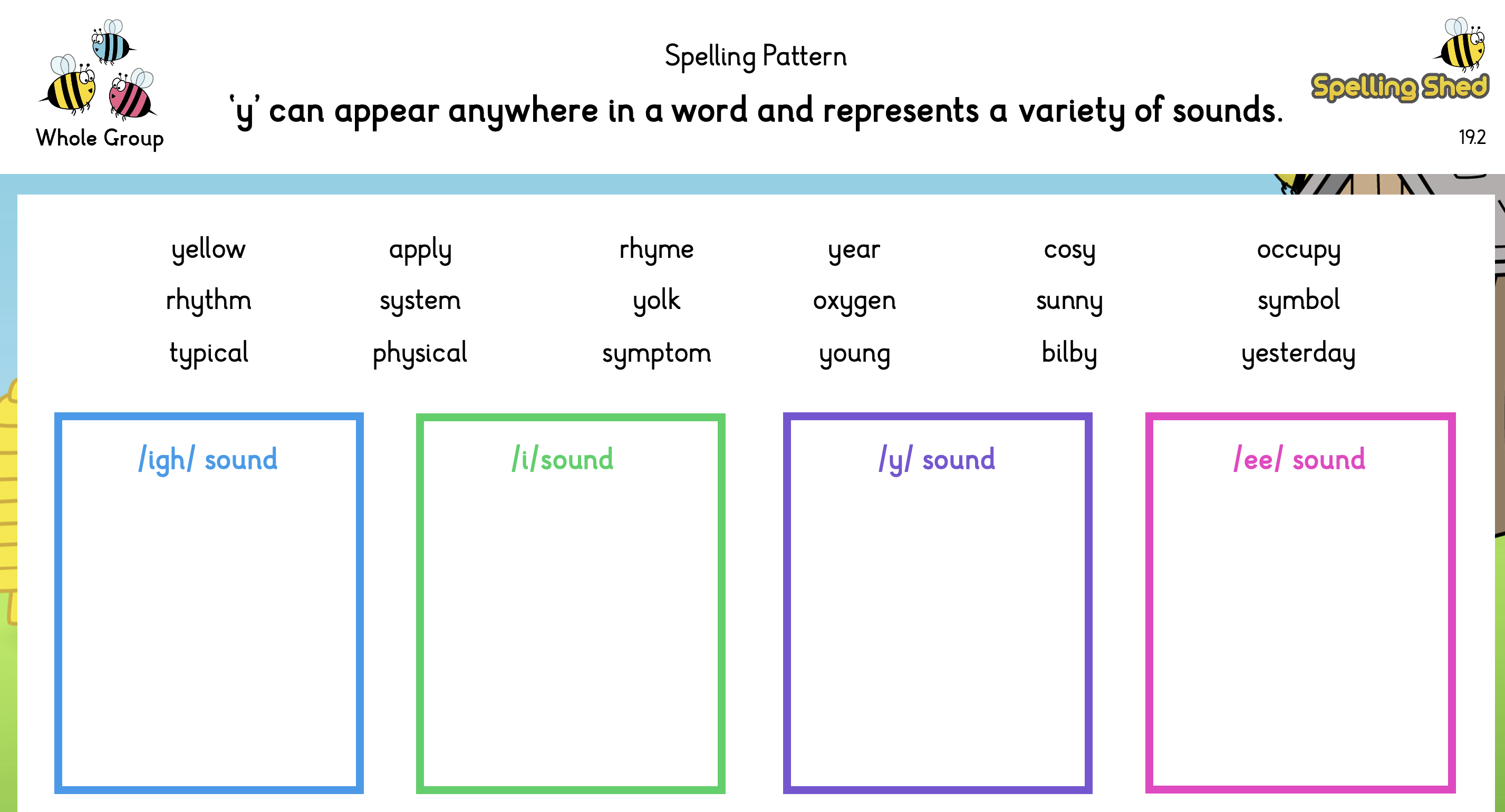
“Orthographic knowledge is knowing which letter patterns are possible in English words, and which letter patterns are not.” (Stone, 2021, p. 45)
In Spelling Shed lessons, students continue to build on the strong phonics foundations established in the early years. This aligns with the Science of Spelling, which shows that confident spellers understand how phonemes (sounds) connect to graphemes (letters). Through teacher-led discussion and guided investigation, students explore the structure and logic of English spelling. They learn how letter patterns represent sounds and how the frequency and position of these patterns influence spelling.
This focus on orthographic knowledge moves children beyond memorisation and helps them develop the insight and flexibility they need to spell with understanding.
Morphology
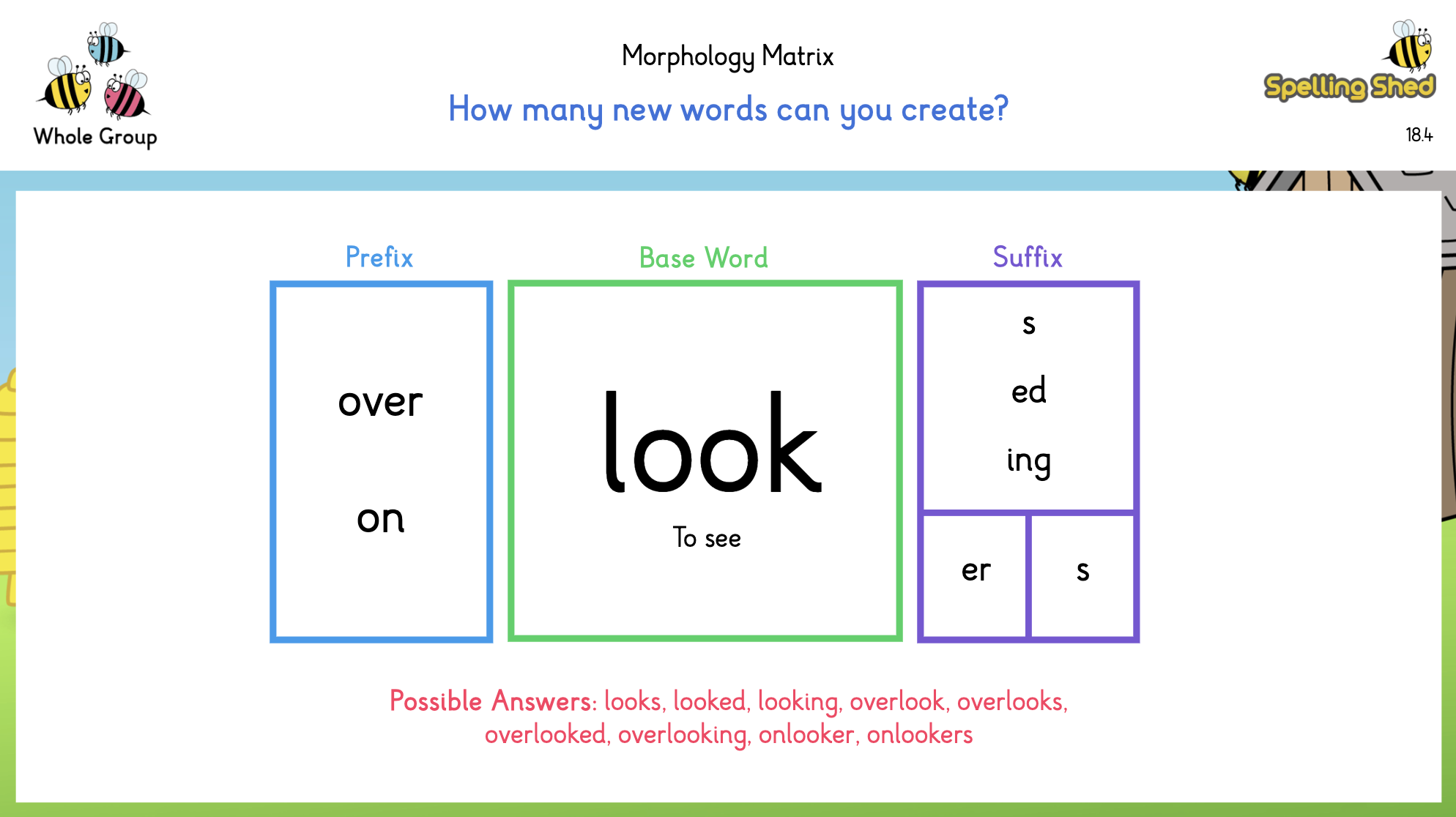
“Unpacking the morphemes in a word is key to getting the spelling of the word right.” (Adoniou, 2016)
Students explore words as more than strings of letters. They study word parts, their meanings and how these influence spelling. The Spelling Shed curriculum is carefully sequenced to build morphological knowledge step by step.As students progress, they revisit and consolidate their understanding of common root words, prefixes and suffixes. They learn how these parts work together to create meaning. They also see how a prefix can completely change a word’s meaning or how a suffix alters its grammatical role.
By adding affixes to a base word such as ‘look’, students begin to notice meaningful connections between words and understand that spelling reflects meaning as much as sound. This approach encourages curiosity, analytical thinking and a deeper appreciation of how English fits together.
Over time, students become increasingly confident in recognising familiar morphemes and applying this knowledge when encountering new or unfamiliar words. This strengthens both spelling accuracy and vocabulary growth.
Etymology
“…we need etymology to understand spelling-not to give us answers but to reveal clues. An etymological reference is a powerful resource, a treasure chest waiting to reveal its secrets.” (Scibetta-Hegland, 2021)
Most lessons within the Spelling Shed curriculum include an etymological focus, giving teachers the opportunity to explore the fascinating origins of the words students are learning. This helps students understand that English spelling is not random but reflects the language’s long and varied history.
Through these explorations, students see how English has borrowed and adapted words from many other languages, including Latin, Greek and French. They discover that spelling patterns often make sense once you know where a word comes from.
This approach supports accurate spelling and enriches vocabulary and comprehension. It helps students recognise word families and understand the stories behind the words they use every day.
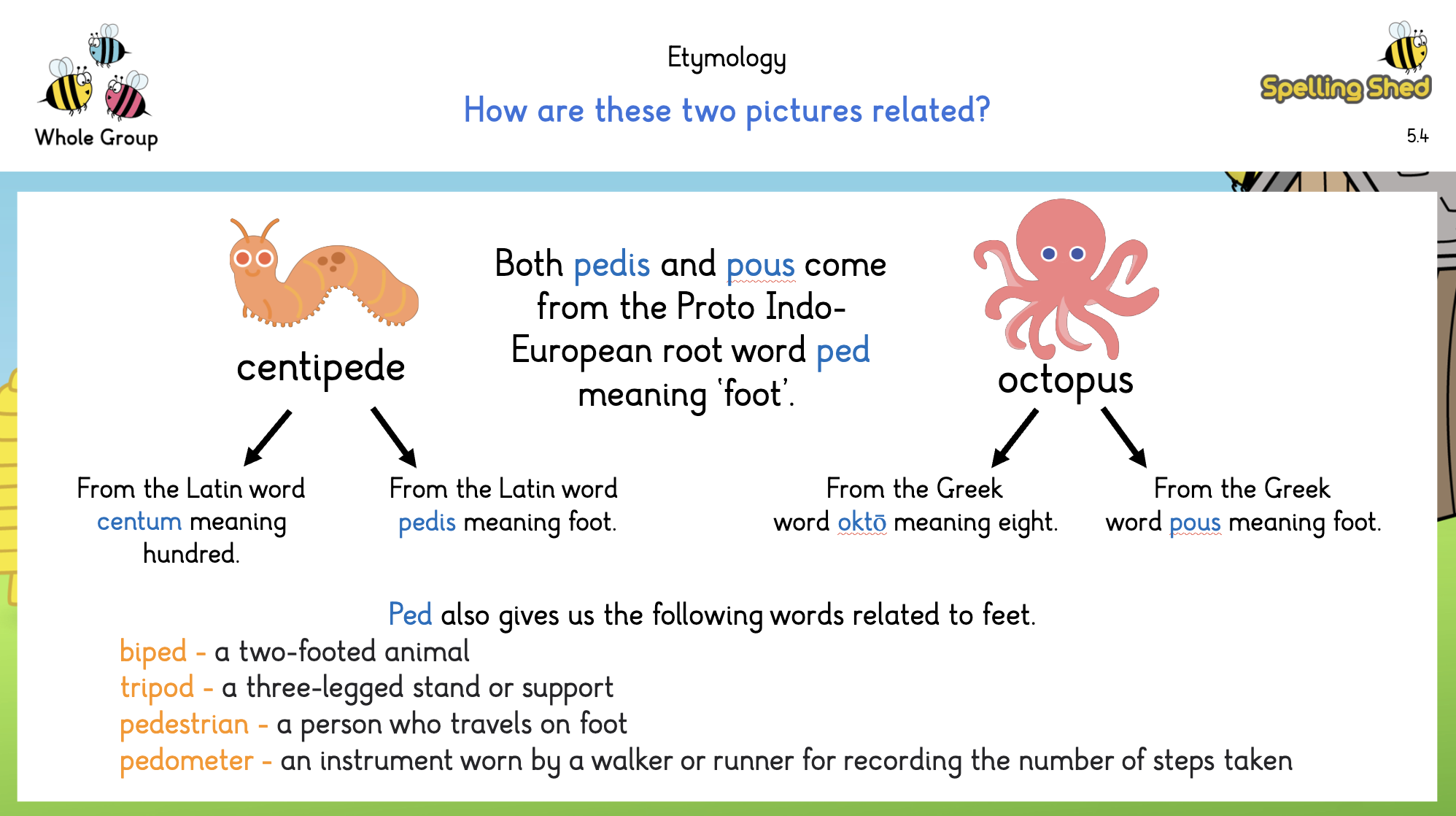
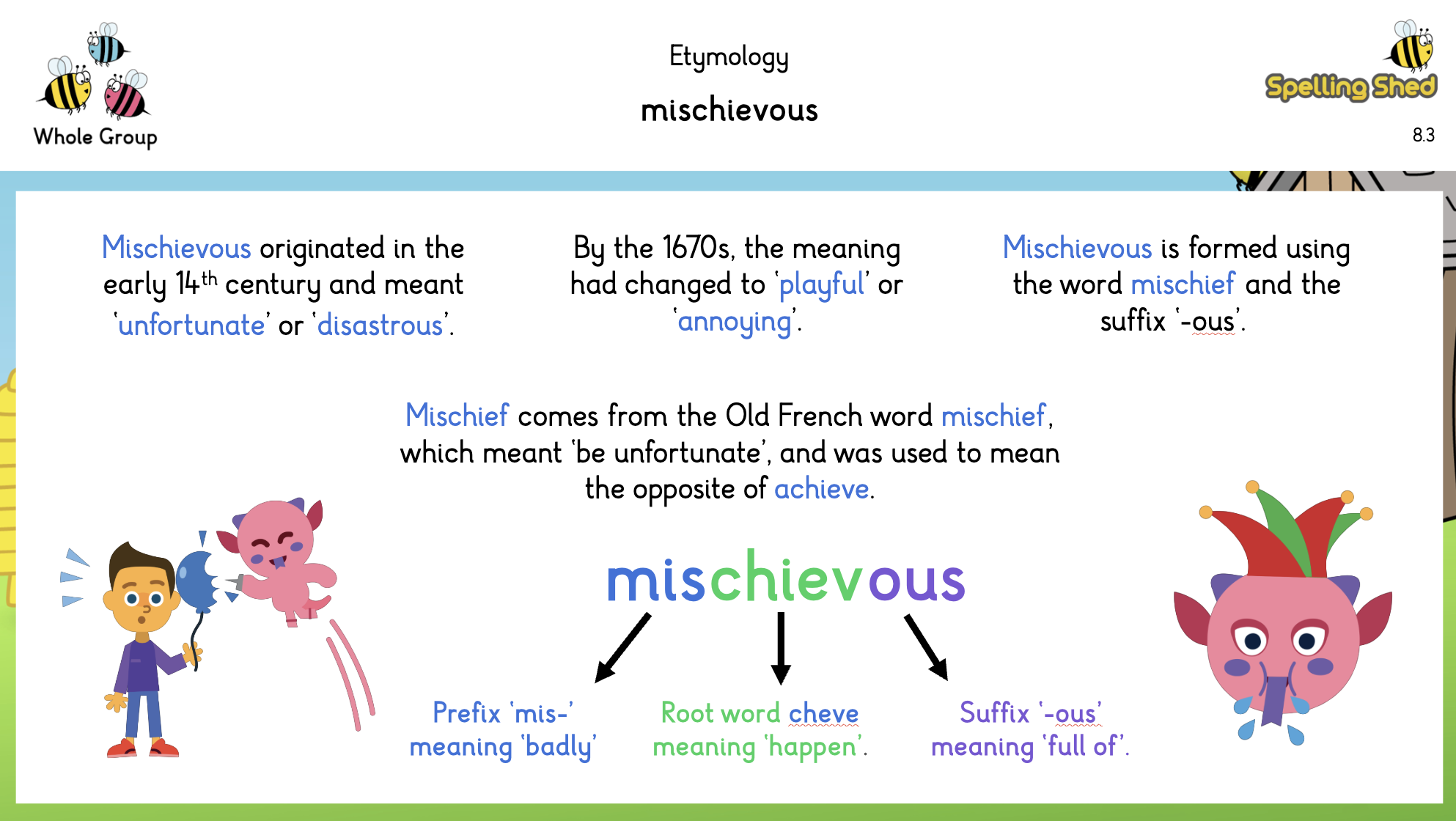
Differentiation
Spelling Shed supports differentiated learning and allows students to progress at their own pace. They can engage with activities suited to their needs. Where further support is required, teachers can draw from earlier Stage lists that revisit specific grapheme–phoneme correspondences (GPCs) in more depth. This flexible, responsive approach helps prevent cognitive overload and keeps students focused on mastering one skill at a time.
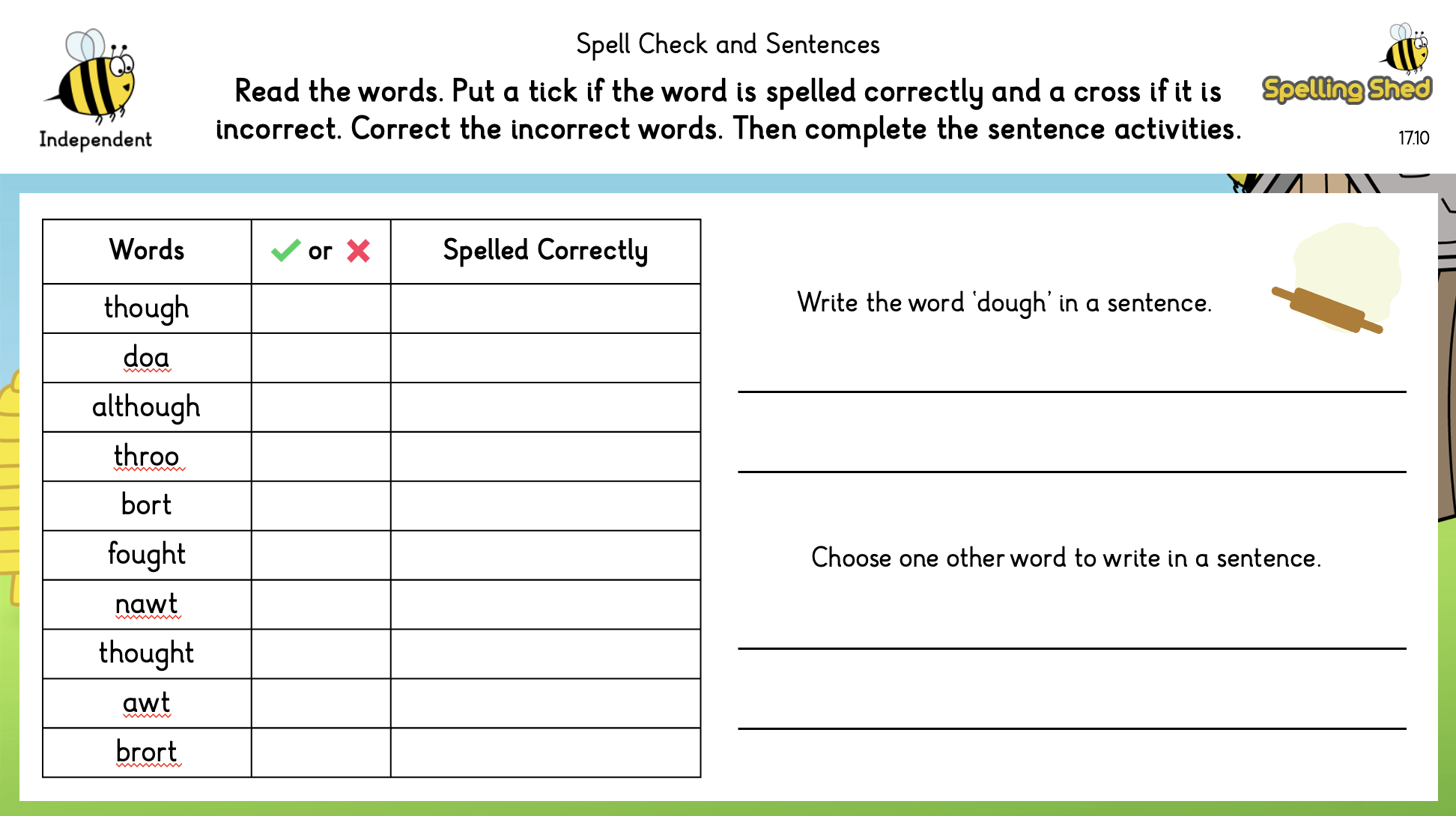
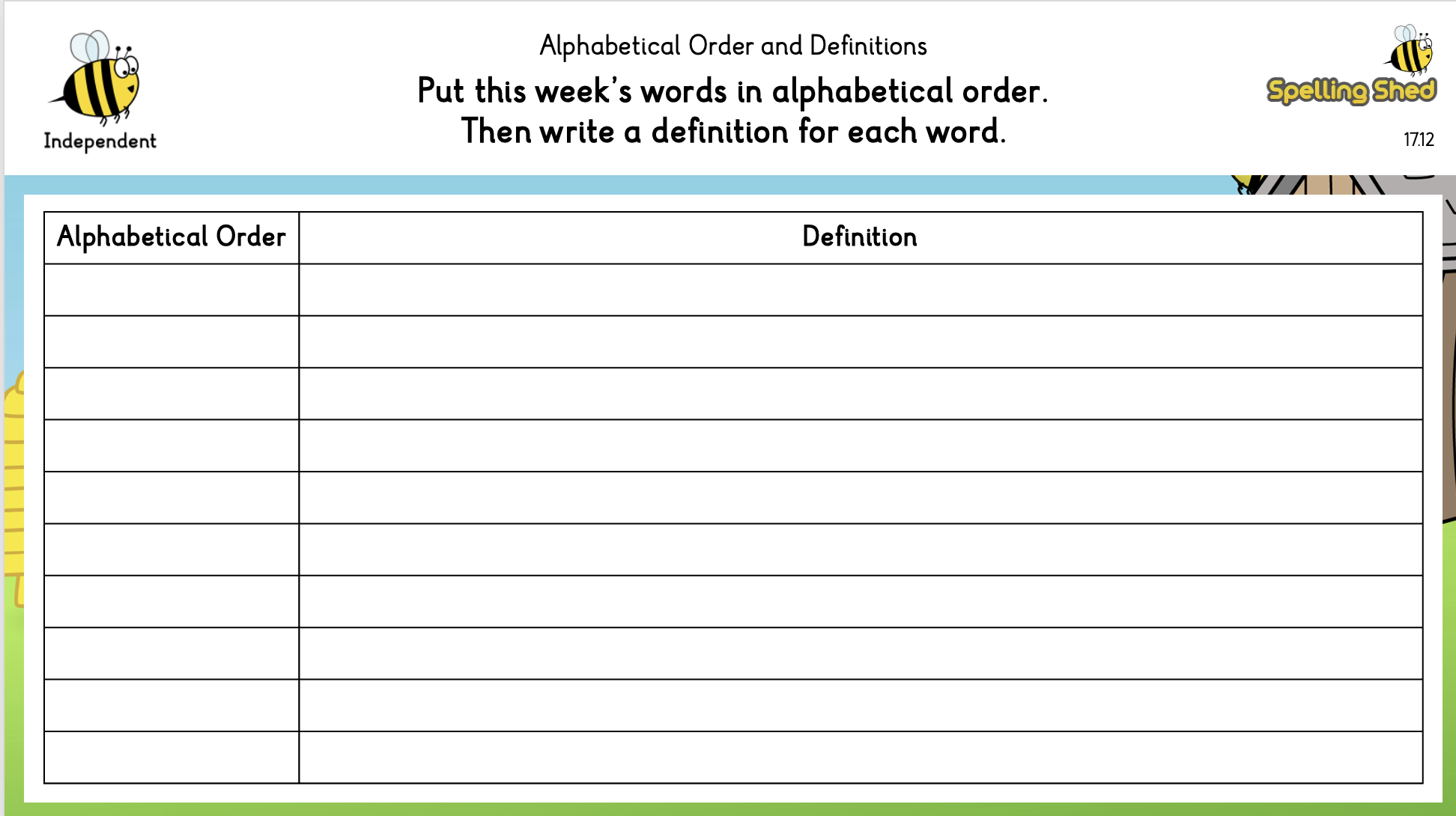
Purposeful Progression
Each lesson is built around a clear objective drawn from the Australian Curriculum (Version 9.0). We provide everything teachers need, including detailed lesson plans, teaching slides, printable resources and practice materials. All of these are structured for easy use across a busy classroom.
At the beginning of each Stage, students revisit key concepts before moving on to new content. This spiral review strengthens previously learned skills while introducing new ideas in meaningful ways. As Moats (2005/2006) notes, “explicit instruction and cumulative review are essential for building automaticity and mastery.”
Review
Plenaries and consolidation activities give students the opportunity to revisit, reflect on and apply what they have learned. This is where retrieval practice plays a powerful role. Recalling earlier patterns, meanings or rules activates long-term memory and strengthens neural pathways. Short and varied reviews, such as sorting tasks, dictations or quick-fire games, reinforce spelling patterns and build fluency.
These moments of reflection transform new learning into lasting understanding and support both accuracy and confidence.
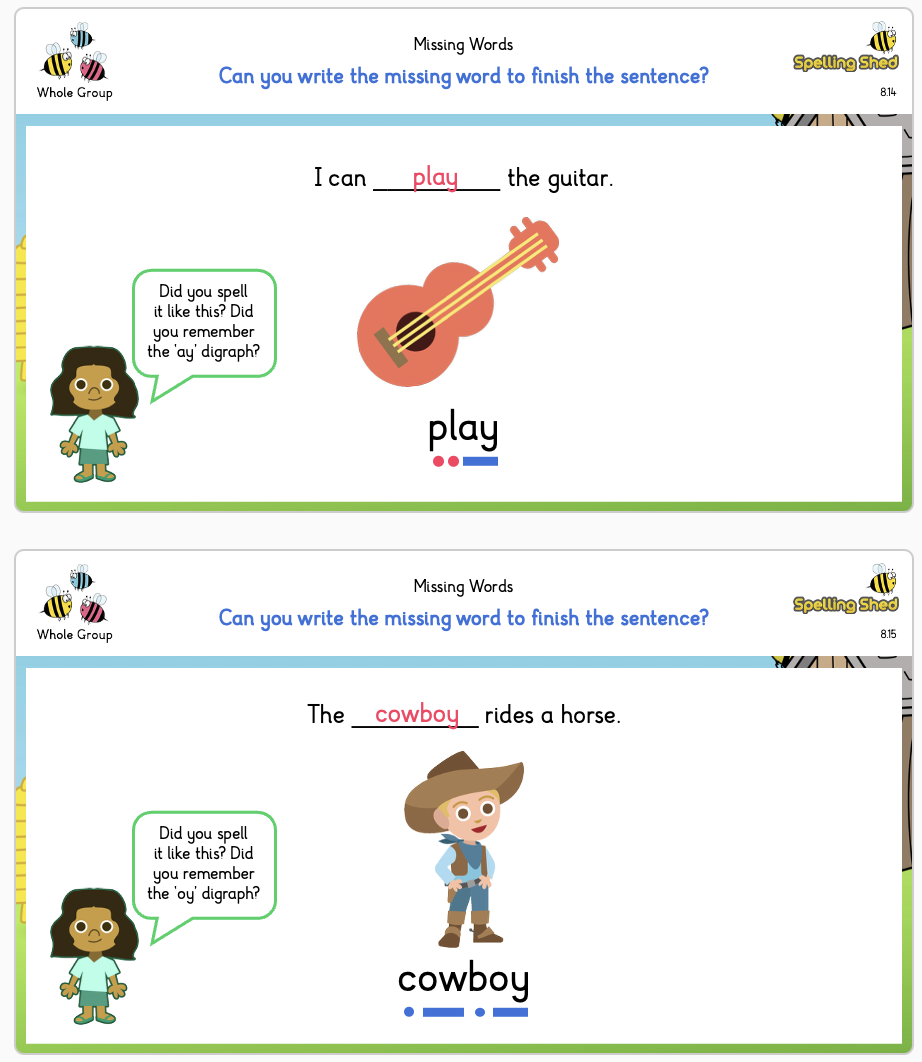
Building fluency and meaning
Spelling Shed also reinforces the connection between spelling and fluent reading. Research shows that skilled readers recognise words by connecting sounds to spelling patterns rather than memorising whole-word shapes (Ehri and Snowling, 2004). In line with this, our lessons teach high-frequency words through phonics and pattern knowledge, not rote memorisation. By connecting sounds, patterns and meaning, Spelling Shed equips students with the knowledge and confidence to read and write independently.
Connecting language, logic and a love of words:
The Science of Spelling shows that English is not chaotic. It is a beautifully structured system that links sound, meaning and history. At Spelling Shed, we help children explore how and why words work.
When students learn to see spelling as logical and meaningful, they become curious, confident and capable readers and writers. That is exactly what effective spelling instruction should achieve.






